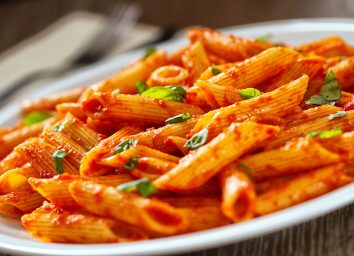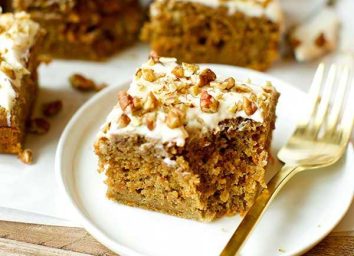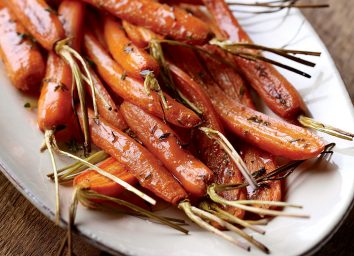8 Common Mistakes You're Making When Cooking Veggies
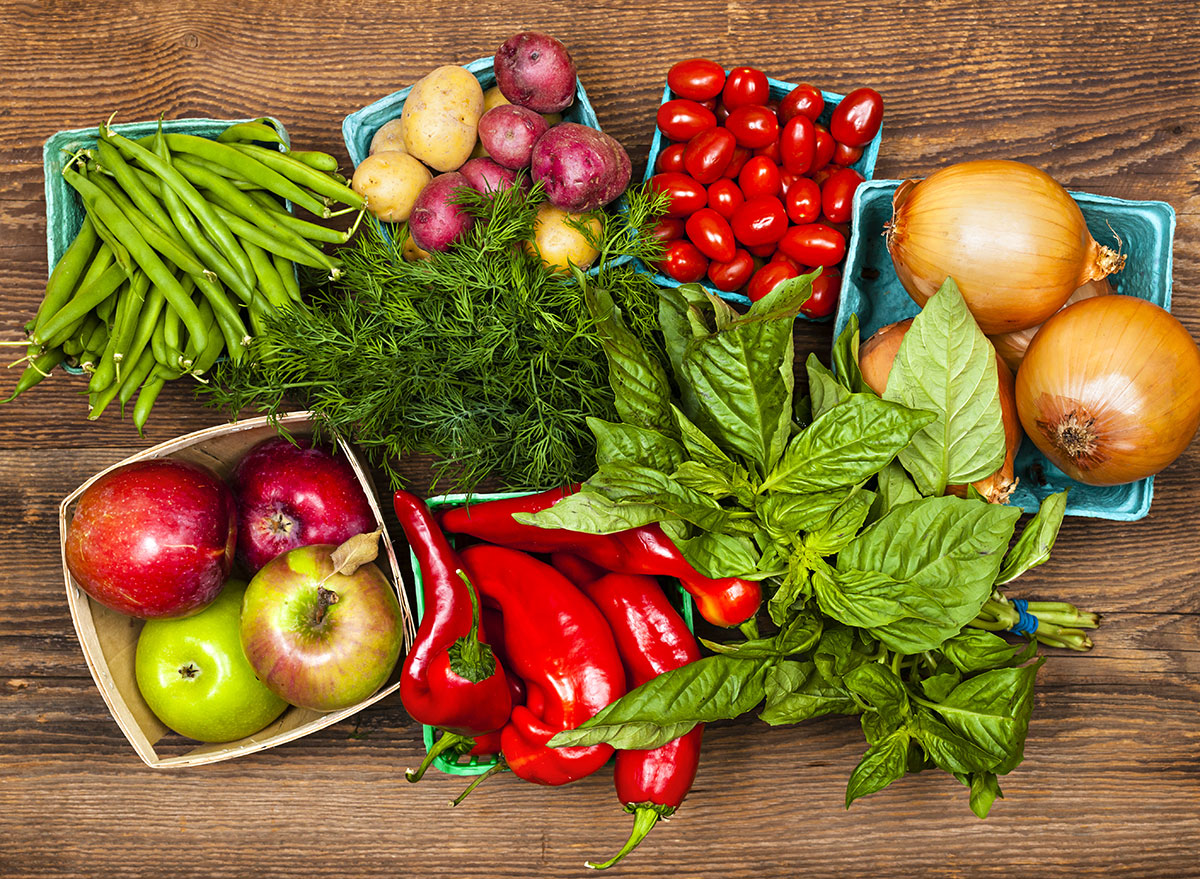
Mistake: You don't stray from the recipe.
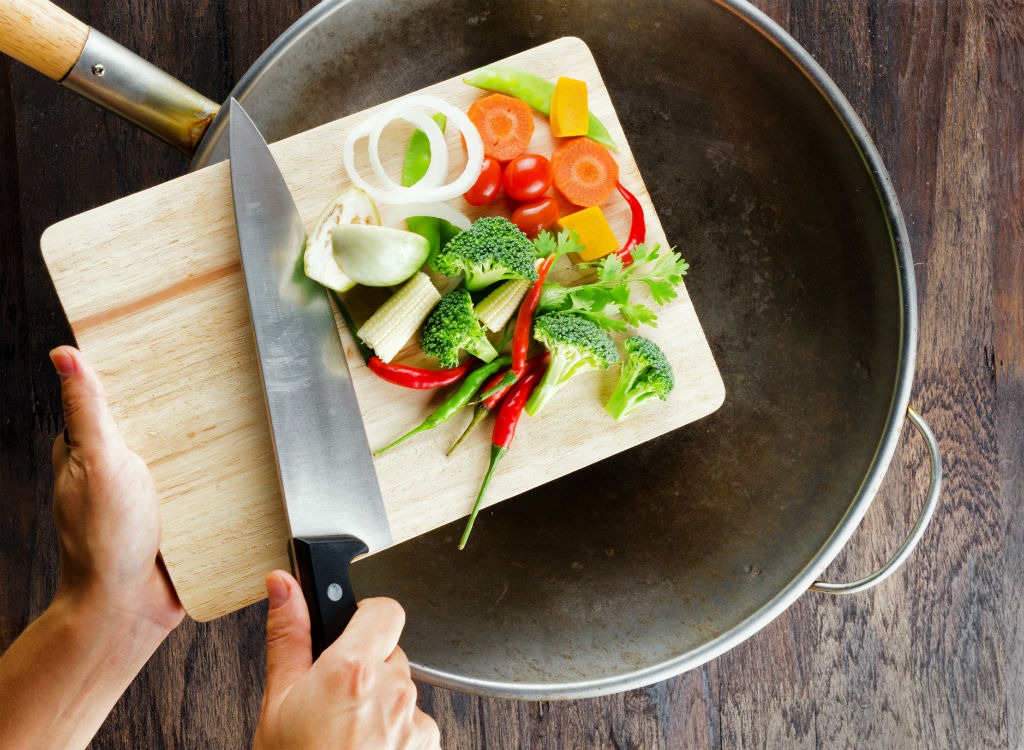
You may have followed the recipe step-by-step, but that doesn't mean you cooked your vegetables the right way. One of the most common culinary errors? Exposing vegetables to heat for too long. Doing so destroys the majority of vegetables' nutrients. Boiling them is also a no-go. This method causes water-soluble micronutrients like riboflavin, folate, and B and C vitamins to leach out into the water—which most people then pour straight down the drain. Another surefire way to nix all the nutrients in your veggies? Throwing them into a deep fryer. No matter how healthy your veggies are, they can't undo the damage that comes along with all the excess fat. So forget the deep fryer—and focus on these 40 Things Healthy Cooks Always Have in Their Kitchen instead!
The solution: Skip the boiling and long cooking times. Instead, steam your veggies for five minutes and then finish them in a saucepan over medium heat. If you want to make homemade "fries," stay far away from the deep frier and bake your crunchy sticks on a metal tray instead.
Mistake: You're smoking them out.
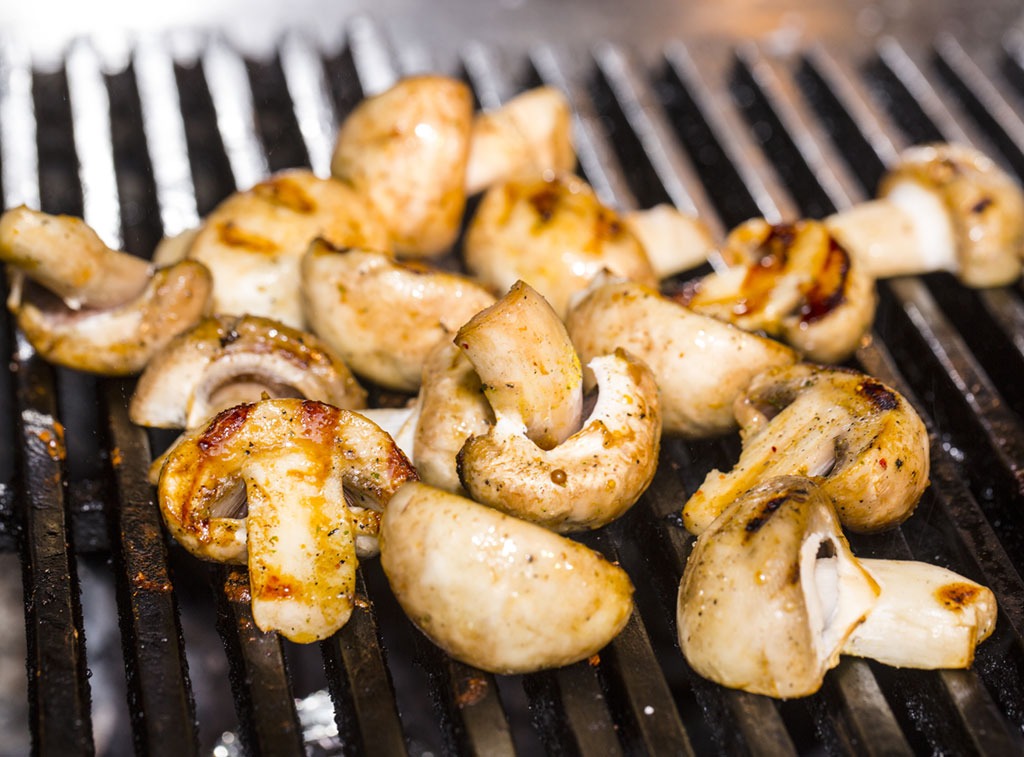
While you may love the slightly-burnt flavor that your grill lends to veggie kabobs, the hot and dry environment can deplete your produce's nutrients. What's worse, if you leave them on the grill long enough that they develop a blackened, charred appearance, that's a sign the veggies could have been exposed to benzopyrene, a carcinogenic chemical found in cigarette smoke. Another recipe for nutritional disaster? Slathering veggies in oil rather than cooking them over extra-high heat in an attempt to sit down to the dinner table sooner. When oil is exposed to extreme heat, it creates smoke that can break down the antioxidants in vegetables.
The solution: Next time you're BBQing outside, ditch the kabobs and cook your vegetables in a grill basket instead. This tactic eliminates the risk of consuming dangerous char, while helping the veggies retain their moisture, vitamins, and minerals. Whipping up dinner indoors? Stick to medium-high cooking heat and skip the olive oil drizzle before heating your veggies. Cooking them dry and adding the fat after will help cut back on antioxidant-depleting smoke.
Mistake: You toss out the good parts.
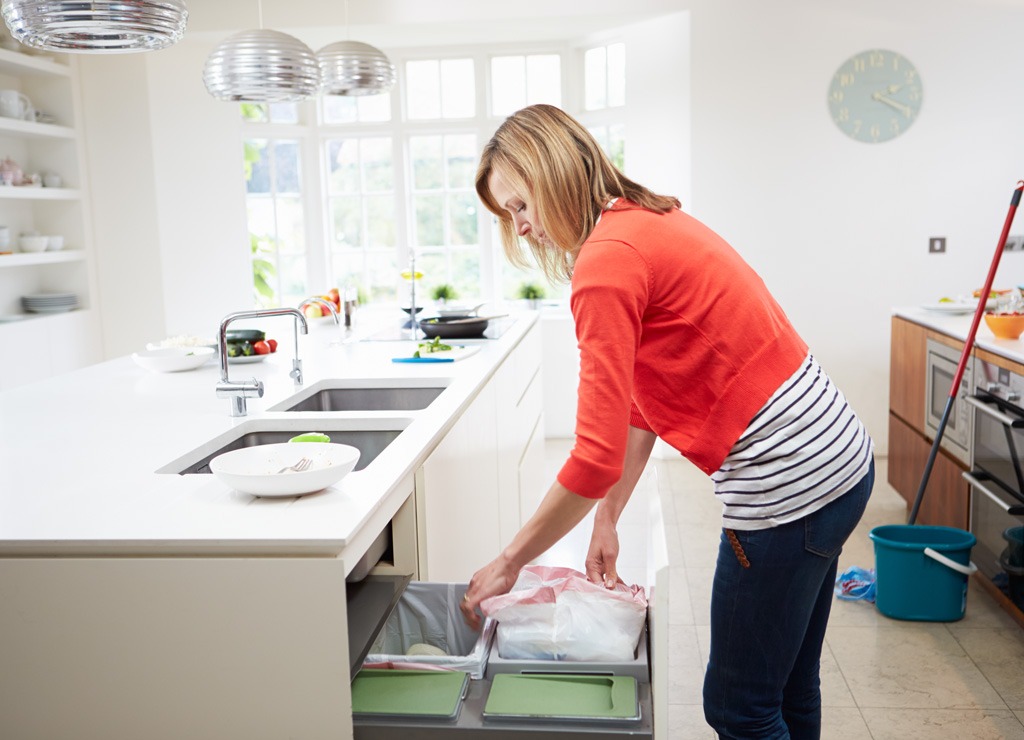
How many times have you chopped the stalk and leaves off your broccoli and tossed them into the trash? Or peeled off cucumber and potato skins? Don't be embarrassed if you do it quite often—it's a common error. But now's the time to change your ways and stop throwing out the healthiest parts of the veggies. Skins, leaves, and stalks have unique nutrients not found in other parts of the vegetables. They also have higher concentrations of vitamins than parts more commonly consumed.
The solution: Step away from the peeler and chill with the chop-n-toss. Use broccoli stalks and leaves in stir-fries, soups, and salads to get a hefty dose of health-boosting nutrients.
Mistake: You use and abuse them.
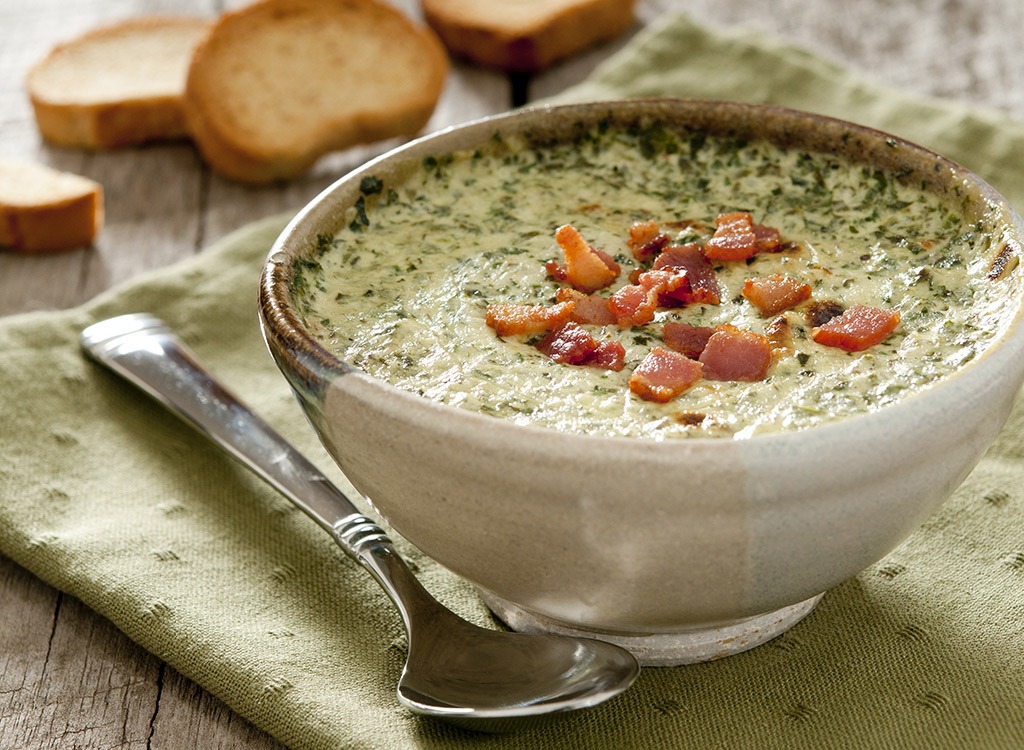
Vegetables should be the star of your meal, not a vehicle for calorie- and fat-laden sauces. There are some people who think something is healthy just because it incorporates veggies, when it winds up being one of the worst "healthy" snacks out there! All of you cheese sauce and onion dip lovers out there know exactly what we're talking about! You may have convinced yourself that your condiment choices are irrelevant when paired with something as low-cal and healthy as vegetables, but that simply isn't true. Not convinced? Consider this: Marzetti Dill Veggie Dip manages to pack a whopping 110 calories into a teeny-tiny two-tablespoon serving. You're likely loading up on three or four times that, which turns your 20-calorie serving of bell pepper slices into a 470-calorie disaster loaded with 48 grams of fat!
The solution: When you're snacking on raw veggies, opt for hummus over dips. Opting for the Greek-inspired spread will save you 60 calories per serving—which really adds up when you're downing a lot of the stuff. As for you cheese sauce lovers, look for sauce recipes that incorporate cheese—just not as the primary ingredient. We like versions that pair Parmesan with balsamic, garlic, and lemon juice.
Mistake: You skip the sink.
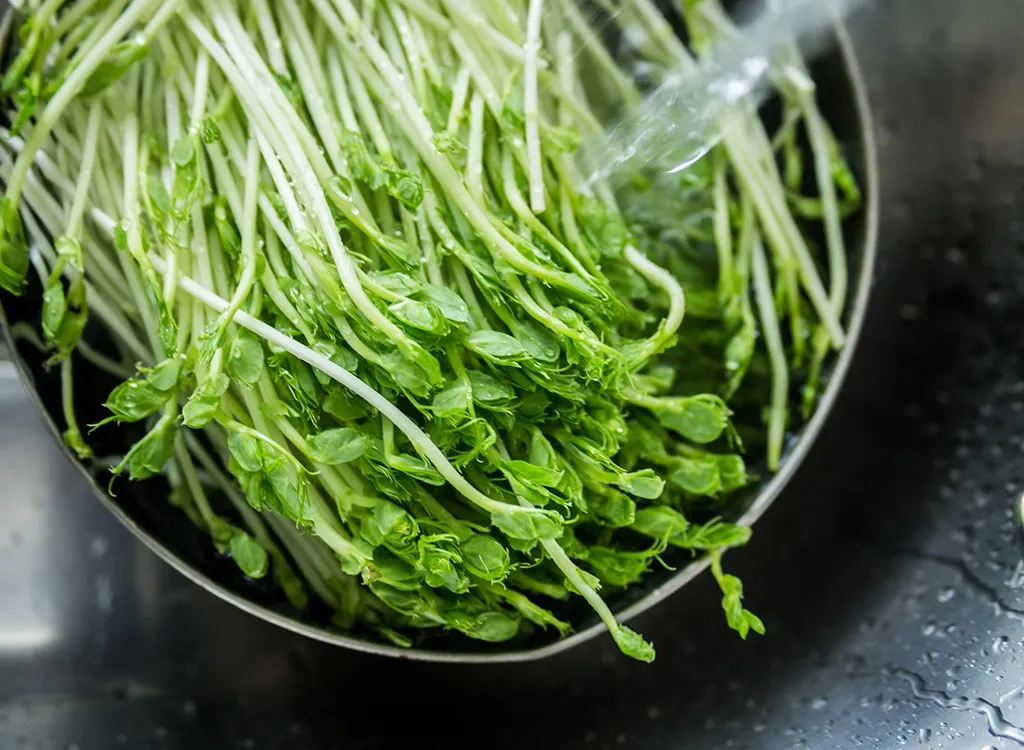
Conventionally-grown, pesticide-laden vegetables like celery, spinach, sweet bell peppers, and tomatoes all made appearances on the 2018 Environmental Working Group's annual Dirty Dozen List. If you tend to quickly rinse these veggies—or not wash them at all—you're likely ingesting chemical residues that can cause stomach pain, nausea, and diarrhea. The worst part is, these chemicals don't just come and go. They hide out in our fat cells until we go on a diet and start losing weight. According to researchers, when the pounds start to come off, the chemicals come out of hibernation and shoot into the bloodstream, slowing energy expenditure and metabolism.
The solution: Even if you always buy organic, soak your veggies in a pot of water for 10-15 minutes before eating them. Then give them another quick rinse under some running water to make sure they're clean.
Mistake: You're not pairing them with fat.
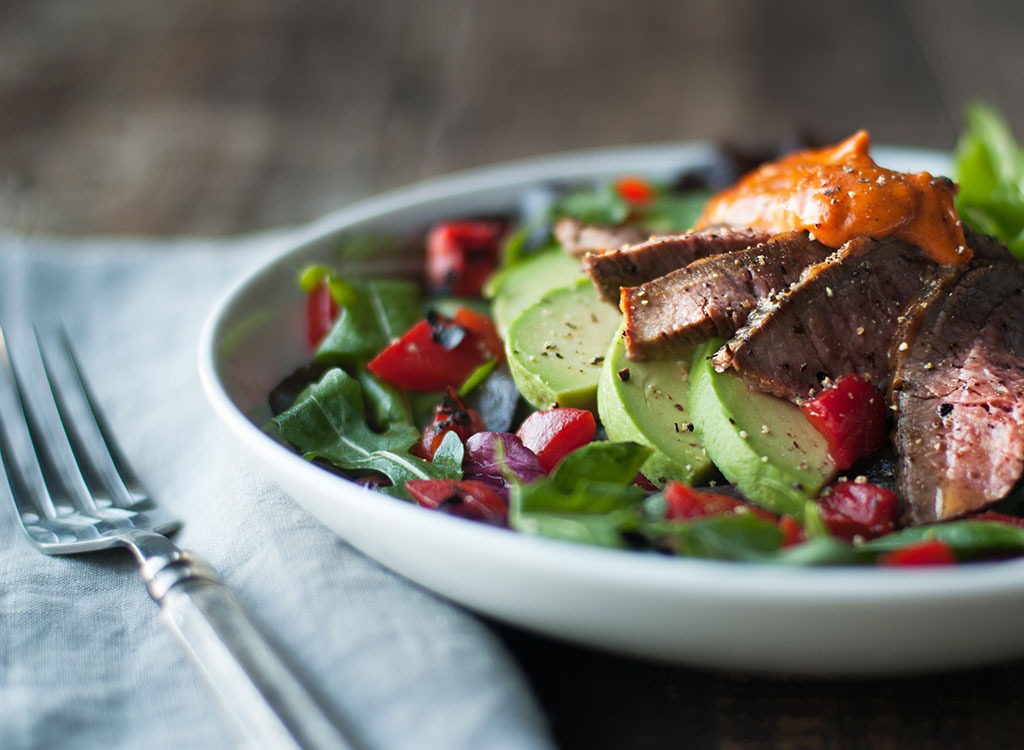
If you stick with low-fat veggie dip to stay trim, you may be doing your health a disservice. According to Iowa and Ohio State University researchers, pairing a little bit of fat with red, yellow, orange, and dark-green vegetables helps the body absorb cancer-fighting and heart-healthy nutrients like lycopene and beta-carotene. Study findings show that you'll need to consume six grams of added fat with your veggies to reap the maximum nutritional benefits. While that may seem like a lot, dietary guidelines actually suggest that healthy adults consume no more than 35 percent of total daily calories from fat—which is up to 70 grams a day if you're consuming a 1,800-calorie diet.
The solution: Pair your veggies with healthy sources of fat. Typically eat a salad for lunch? Add a half cup of avocado (11 g fat) or two tablespoons of Cucina Antica Organic Caesar dressing (8 g fat) to your plate to hit the nutritional mark.
Mistake: You only eat them raw.
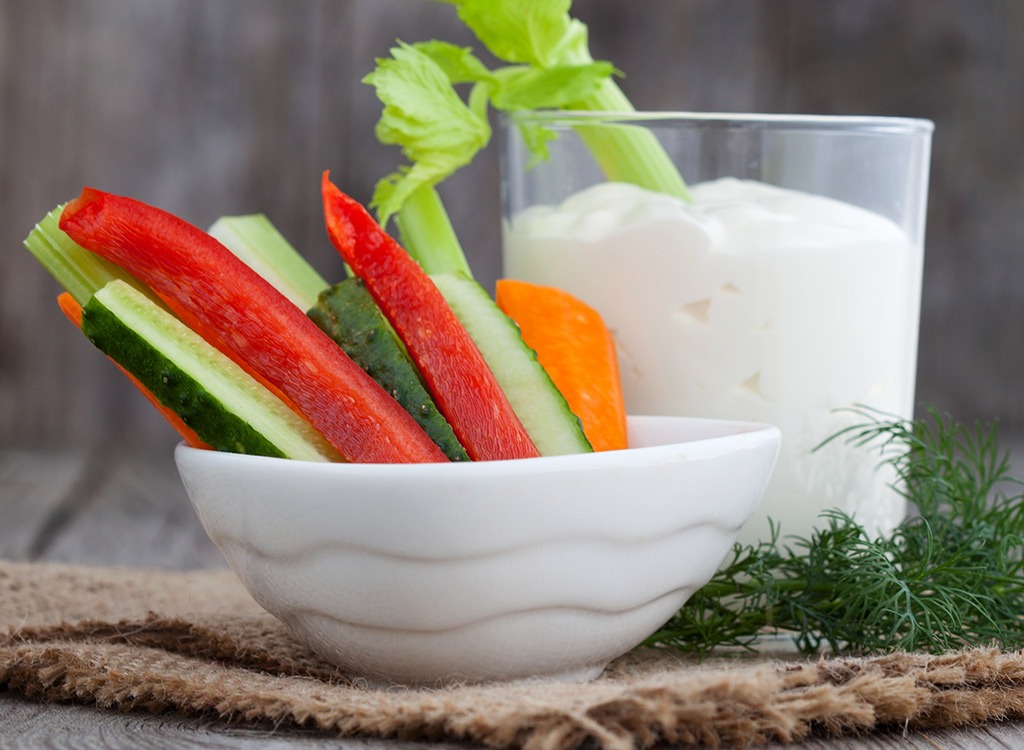
There's nothing better than the sweet, crispy crunch of a fresh carrot, but munching on this orange vegetable raw isn't the best way to get your daily dose of vitamins. According to an International Food Research Journal report, boiling the orange vegetable best preserves its nutrients. If learning this was a bit of a shocker for you, it's understandable; many other veggies lose their water-soluble vitamins once they're boiled. Tomatoes also get healthier under the heat. A Cornell University study found that cooking them boosts the amount of lycopene, a disease-fighting antioxidant in tomatoes. Researchers believe that heat softens the plant's cell walls, allowing more nutrients to be released and then absorbed by our bodies.
The solution: In the Cornell University study, lycopene absorption rose 35 percent after tomatoes were cooked for 30 minutes at 190.4 degrees F. Follow suit if you want to reap the benefits at home. If you prefer to add carrots to your plate, boil, drain, and transfer them to a bowl and toss with a drizzle of olive oil, a bit of pepper, and dried rosemary to pump up the flavor. BONUS: 20 Awesome Recipes for Mason Jar Salads
Mistake: You're juicing away their fiber.
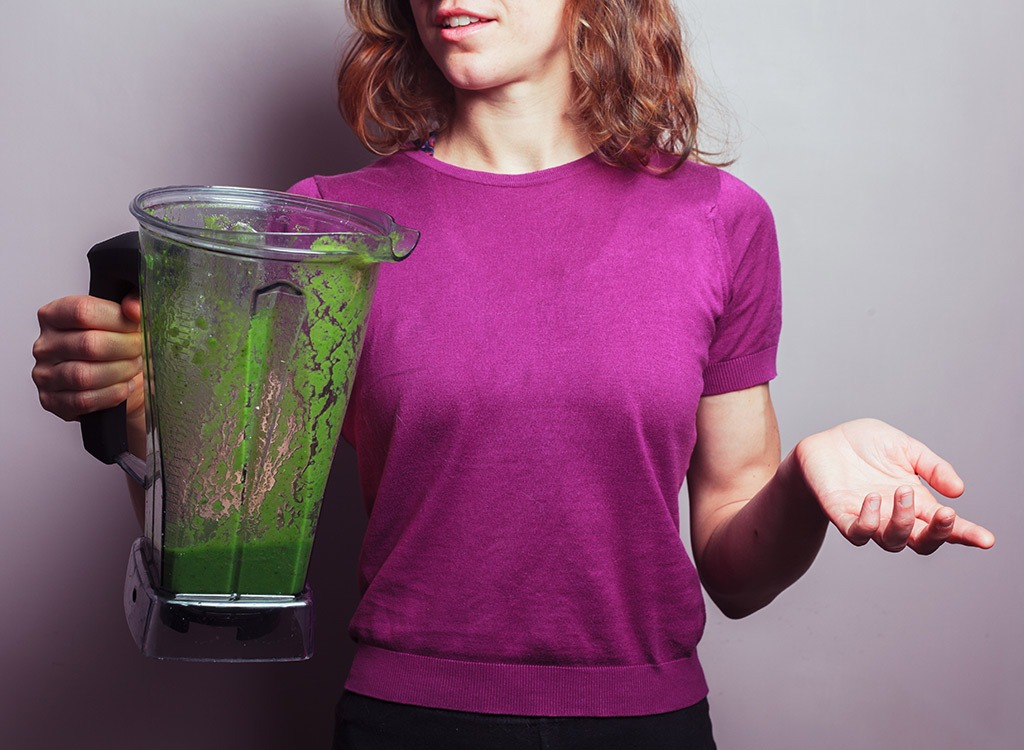
Yes, juicing is better than eating no veggies at all, but when produce goes through the juicing machine, its fiber-rich skins and pulp that help boost satiety get left behind. The good news is, veggies' vitamins, phytonutrients, and minerals still find their way to your cup. There are actually at least 27 Things That Happen to Your Body on a Juice Cleanse!
The solution: Toss out your juicer! After removing the seeds and rinds, throw your veggies into a blender instead. This method retains vegetables' healthy fiber. There are plenty of juicing companies that bottle blended versions, so you can grab a juice on the go without missing out on crucial fiber. If your drink comes out too thick when blending at home, add some water to thin it out a bit.
